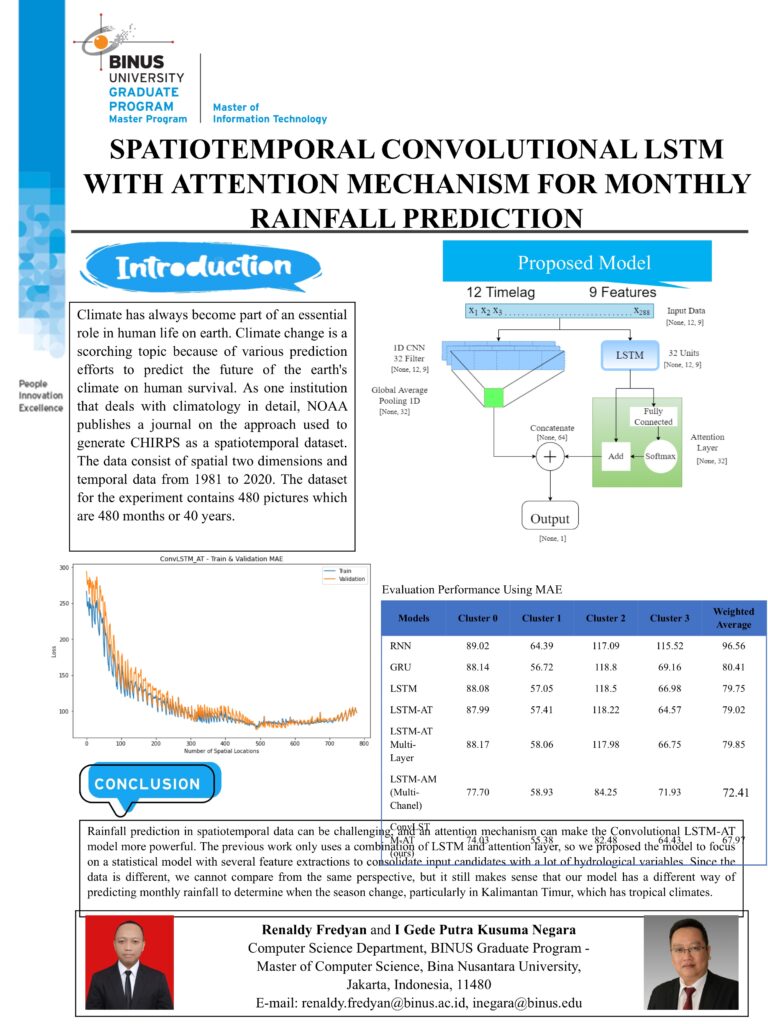Spatiotemporal Convolutional LSTM with Attention Mechanism for Monthly Rainfall Prediction
Climate has always become part of an essential role in human life on earth. Climate change is a scorching topic because of various prediction efforts to predict the future of the earth’s climate on human survival. As one institution that deals with climatology in detail, NOAA publishes a journal on the approach used to generate CHIRPS as a spatiotemporal dataset. The data consist of spatial two dimensions and temporal data from 1981 to 2020. The dataset for the experiment contains 480 pictures which are 480 months or 40 years. K-means clustering is used to collect different characteristics of spatial data based on the Within Cluster Sum Square (WCSS) value using the Elbow method. Generalizing four spatial areas of different characteristic data. Author has proposed two approaches by using a Convolutional Long Short-Term Memory Attention and Extreme Learning Machine model. The method’s purpose is to improve the prediction for each previous method. Having lowest loss error than other models such as RNN, GRU, LSTM, and LSTM-AT. Comparing with machine learning method, ELM has qualified to against LSTM. The Convolutional LSTM-AT model achieved MAE 67.97 and training with more than two mintues. Moreover, ELM-Cluster evaluation using MAE with a score of 66.98, getting the fastest training with only 28.9 seconds compared to the other methods.
Keyword: Rainfall Prediction, Spatiotemporal Data, Convolutional LSTM-AT Model, ELM-Cluster.




Comments :